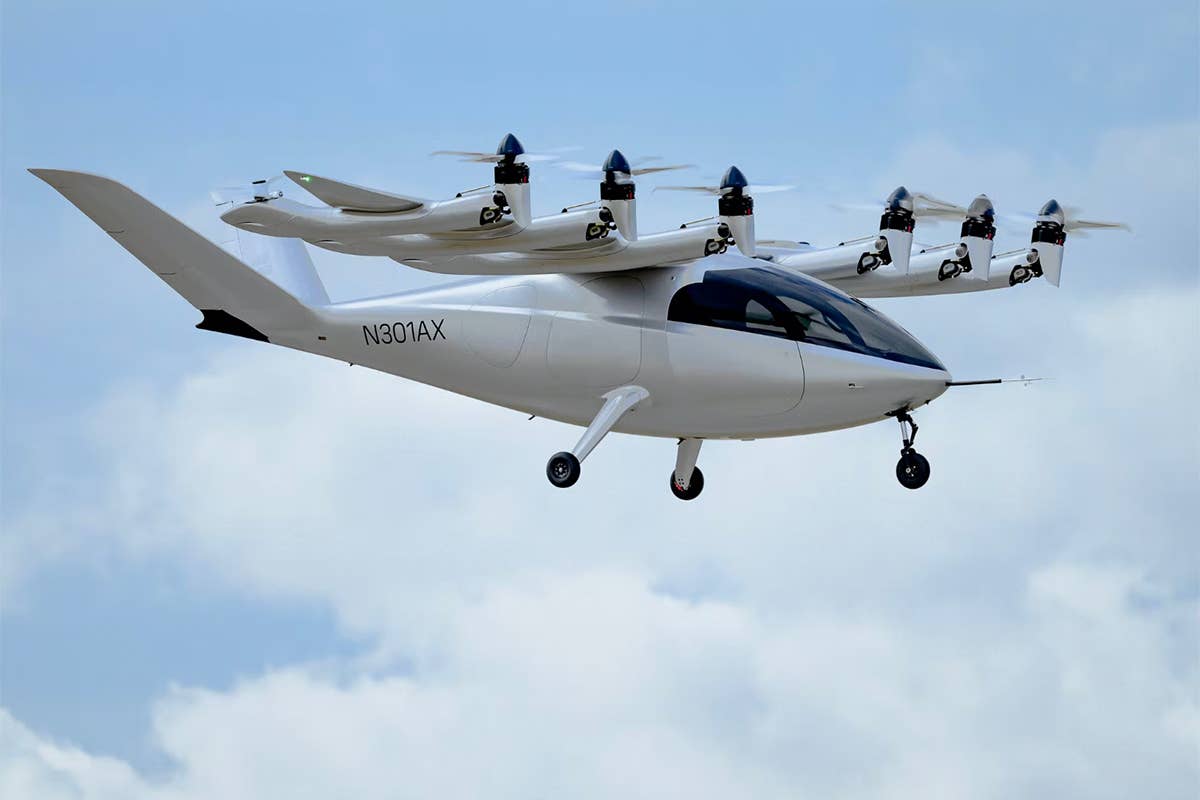Archer’s Air Taxi Prototype Returns to the Air
Electric vertical takeoff and landing (eVTOL) air taxi developer Archer Aviation announced Tuesday it is expanding its flight testing program—using for the first time a tilt propeller system during hover.

Archer Aviation announced Tuesday a new flight test campaign of its Maker air taxi demonstrator. [Courtesy: Archer Aviation]
Electric vertical takeoff and landing (eVTOL) air taxi developer Archer Aviation (NYSE: ACHR) announced Tuesday it is expanding its flight testing program—using a tilt propeller system for the first time during hover.
Six months after the first flight of its Maker prototype at Archer’s California test facility, chief engineer Geoff Bower revealed the aircraft resumed flights last week, when engineers “saw the first use of the tilt propeller system (TPS) for active control during hover and the system performed as expected.”
“We have now returned Maker to the air with an updated configuration that supports transition flight,” Bower said.
Archer said it remains on track to test full transition from vertical (rotor-borne) to horizontal (wing-borne) flight by the end of this year. Perfecting the transition phase is widely acknowledged to be among the most challenging hurdles in developing eVTOL aircraft.
So far, not one developer across this nascent aviation sector has received type certification for an eVTOL aircraft—although a handful, including Archer and Joby Aviation, have made significant progress. Archer has said it intends to receive FAA certification in time to launch an aerial ridesharing service in late 2024.
Last week, the company—which is backed by United Airlines—announced it had hired veteran aviation executive Tom Anderson as Archer’s new chief operating officer. Anderson comes to Archer after serving at Airbus, Boeing, Virgin America, ATR Aircraft, and most recently, as chief operating officer at Breeze Airways.
Maker, fueled by an array of lithium-ion batteries, is designed to cruise at 130 knots with a range of 60 sm. Noise level is expected to be 45 decibels at 2,000 feet agl. It features a v-tail empennage and a 12-tilt-6 configuration that includes six proprotors to create thrust during horizontal flight.
Archer announced a series of key data sets that its flight test team will be gathering during the upcoming flights:
- “Flight mechanics model validation,” including “trim motor RPMs and power draw as a function of airspeed.”
- “Control system stability margins estimated using system identification methods.”
- “Processing data to improve simulation models of vehicle aerodynamics, battery performance, and motor efficiency to match flight test data.”
- “Characterizing vibration and thermal environments for future airborne equipment qualification.”
- Acoustic data

Sign-up for newsletters & special offers!
Get the latest FLYING stories & special offers delivered directly to your inbox






